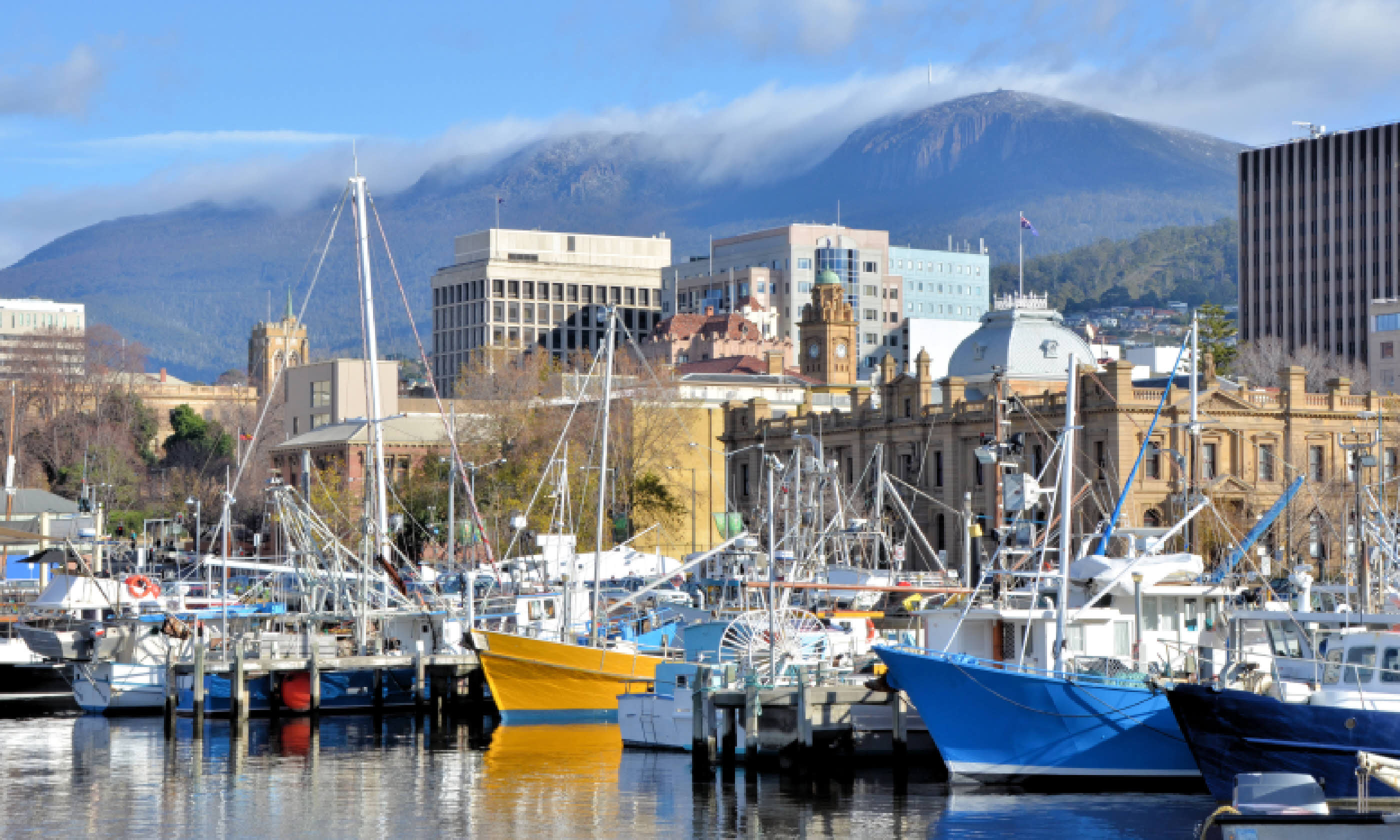
Dismissed as a backwater, the Tassie capital – with its super setting, rich history and fabulous food – is coming of age
It used to be an Aussie joke that Hobart was 30 years behind the country’s other state capitals. In many ways it still is. The nation’s second-oldest city remains small in scale and relaxed in atmosphere; its focus is still the broad Derwent estuary that appealed to the British in 1803; its architecture is still Georgian and Federation, from days as a busy whaling and agricultural port, rather than glass high-rises.
It’s only in the past five years or so that ‘mainlanders’ (as Tasmanians call all other Australians) have started to wonder if these weren’t positives all along. Boosted by the cachet of having Australia’s Best Cultural Attraction – iconoclastic gallery MONA trumped some old opera house in Sydney in 2013’s Gourmet Traveller Awards – Hobart has quietly matured into a self-assured, arty little city.
Weekenders from Melbourne and Sydney now arrive in droves, helping to prop up a restaurant and café scene that grows more sophisticated by the year. Sure, it’s gentrification, yet locals pride themselves on the fact that Hobart remains a straight-talking, pretension-free place. Just as a fishing fleet docks opposite one of Hobart’s best hotels, scallop pies are as popular as sourdough for lunch, and weekends still officially start in the pub not the wine bar. Come for fine dining, of course, but don’t dress up – the locals won’t.
All flights arrive over the rural heart of Tasmania. You’ll see eucalypt forest and rolling sheep pasture, perhaps a distant mountain and empty surf beaches – Tassie in a nutshell.
Located 17km east of the city, near Cambridge, Hobart Airport is as good an introduction to Tasmania as any, with nothing flash but everything you need: a small Arrivals hall with a single luggage carousel, a tourist information desk and two ATMs that accept UK debit/credit cards.
Air connections are domestic only (1hr from Melbourne, 1hr 45mins from Sydney), so you will have already passed through immigration on the mainland. Security with sniffer dogs enforces strict quarantine regulations – no fresh foods or animal products can be brought in; there are bins to dispose of offending items. Taxis and shuttlebuses wait outside.
Hobart’s greatest asset is its waterfront. If you’re jetlagged, set aside day one to stroll, café-hop and window-shop. Start at Salamanca Place, a parade of galleries, crafts outlets and cafés in Georgian warehouses built for a then-flourishing port – nowhere better captures modern Hobart’s marriage of creativity and heritage. If it’s a Saturday, you’ll coincide with the celebrated crafts and produce market too.
Grab a flat white in the Tricycle Café, a lovely nook in the Salamanca Arts Centre, then head up to Battery Point. Once the district of dockers and sea captains, this is now the villagey des-res of well-heeled urbanites. Jackman & McRoss (57 Hampden Rd), all bentwood chairs and slow-roast gourmet pies is the patisserie-café for lunch.Back at Salamanca Place, walk past the Georgian state parliament building to the waterfront; here you’ll find Elizabeth Street Pier’s restaurants and acclaimed whisky producer, The Lark Distillery. You’ll also find the Tasmanian Museum & Art Gallery (free), where artfully displayed exhibits narrate everything from aboriginal history to current exploration in Antarctica. The Maritime Museum of Tasmania (A$9 [£5]) opposite, covers port history.
Nearby is Hunter Street, where Hobart was first settled. Raise a glass to the city at the harbourside IXL Lounge Bar bar of the Henry Jones Art Hotel.
Top end: There’s no better cure for jetlag than The Islington (321 Davey St). Australia’s Best City Boutique Hotel 2013 is pure class; a small Georgian manor with art and oddities, faultless staff, a superb restaurant and mountain views. The only caveat: it’s 2km from the centre. Doubles from A$395 (£215).
Mid-range: Hotel Collins (58 Collins St) has a central location and metro style. Décor in the renovated towerblock may lack character, but you’ll be too busy gawping at the mountain and harbour views to care. Doubles from A$275 (£149); half-price standbys often available online.
Budget: Bygone charm and an effusive welcome await at the Astor Private Hotel (157 Macquarie St), a rambling well-maintained B&B that’s superb value for the central location. Doubles from A$110 (£60); the cheapest rooms share bathrooms.Stay, no question. The Museum of Old and New Art (A$20 [£11]) has rebranded Hobart; its subterranean building is as wild as its installations. Arrive by catamaran (A$20 return) and dine at MONA’s gourmet restaurant. Other essentials include scaling Mt Wellington, up by half-day hike, down by bike (A$75 [£41]); and trying local produce, from dockside fish ’n’ chips to zeitgeist-busting dineries such as Garagistes.
Then embark on the Aussie road-trip everyone overlooks. The classic weeklong Tassie circuit spins clockwise via Port Arthur Penitentiary, the high seacliffs on the Tasman Peninsula, wildlife wonderland Maria Island NP, Freycinet NP, the Bay of Fires and Cradle Mountain.
Or, go south for hauntingly beautiful Bruny Island and Cockle Creek, literally the end of the road in Australia, but a gateway to one of the purest patches of wilderness on earth.